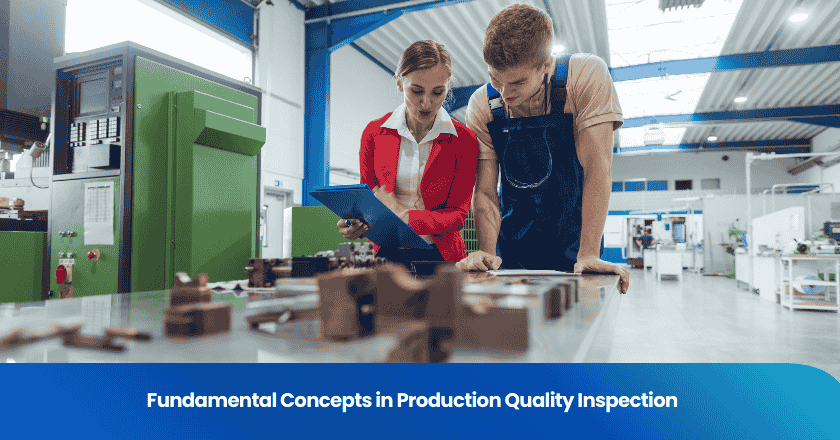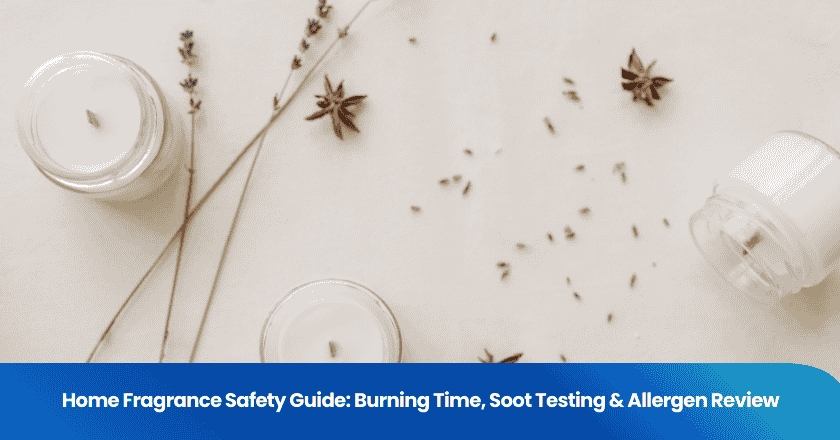
Production quality inspection stands as a critical process in manufacturing. Every stage of production depends on strict quality control to ensure products meet required standards. Professionals in production roles must understand the principles behind quality control, including how inspections support each step. Mastery of these concepts allows teams to spot issues early and maintain consistency throughout production. Quality control not only safeguards the reputation of a production facility but also protects end users from defects. In daily operations, production staff rely on quality control to verify that each batch aligns with specifications. Production managers, engineers, and inspectors all benefit from a strong foundation in quality control practices. Production quality inspection remains essential for long-term success in any manufacturing environment.
Key Takeaways
- Production quality inspection ensures products meet standards by checking materials, processes, and finished goods at different stages.
- Sampling helps inspect a portion of products to save time while still finding defects and maintaining quality.
- Clear documentation of inspections and tests supports traceability, compliance, and helps improve future production runs.
- Regular measurement, testing, and equipment calibration provide reliable data to confirm product quality.
- Continuous improvement and teamwork help solve challenges and keep production quality high and consistent.
Key Terms in Production Quality Inspection
Inspection Types
Inspection forms the backbone of any quality control process in manufacturing. Professionals encounter several inspection types during production. Each type serves a unique role in maintaining product standards.
- Incoming Inspection: Teams check raw materials or components before production begins. For example, in electronic manufacturing, inspectors verify the quality of pcb and pcba components before assembly.
- In-Process Inspection: Staff monitor products during production. This step helps catch defects early and prevents faulty items from moving forward.
- Final Inspection: Inspectors evaluate finished products before shipment. This process ensures that only items meeting quality standards reach customers.
- Special Inspections: Some industries require additional checks, such as esd (electrostatic discharge) testing for sensitive electronic parts.
Inspection types form a key part of the quality glossary and help define the scope of quality control methods in any production environment.
Quality Control Process
The quality control process consists of systematic steps designed to uphold product standards throughout production.
1. Defining Quality Standards: Teams set measurable criteria for products. In the case of printed circuit boards, standards may include electrical performance and visual appearance.
2. Planning: Managers outline the inspection and testing schedule. They determine when and how to apply quality control methods.
3. Execution: Inspectors carry out checks at each stage. They use tools and techniques suited to the product, such as visual inspection or functional testing for pcba assemblies.
4. Documentation: Staff record results and note any deviations. This process supports traceability and compliance with quality management systems.
5. Corrective Actions: Teams address issues found during inspection. They adjust the process to prevent recurrence.
The quality control process ensures that every production run meets customer and regulatory requirements. It also supports continuous improvement in quality management.
Sampling and AQL
Sampling plays a vital role in production quality inspection. Inspectors often cannot check every item in large batches. Instead, they select a representative sample for inspection and testing.
- Sampling Plans: Teams use statistical methods to choose how many items to inspect.
- AQL (Acceptable Quality Level): This term defines the maximum number of defects allowed in a sample. For example, in electronic manufacturing, a batch of pcba units may have an AQL of 1%, meaning only 1% of units can have minor defects.
- Sampling Techniques: Common methods include random sampling, stratified sampling, and systematic sampling.
Tip: Proper sampling ensures that inspection results reflect the overall quality of the production batch.
Sampling and AQL help balance efficiency and accuracy in the quality control process. They allow teams to make informed decisions about accepting or rejecting production lots.
Measurement and Testing
Measurement and testing provide objective data for quality control. These activities verify that products meet defined standards.
- Measurement: Staff use tools such as calipers, micrometers, or automated systems to check dimensions. For printed circuit boards, measurements may include trace width or hole diameter.
- Testing: Teams perform functional tests to ensure products work as intended. In pcba production, testing may involve powering up the assembly and checking signal integrity.
- Inspection and Testing Records: Staff document results for traceability and future analysis.
Measurement and testing form the foundation of the quality control process. They support quality assurance by providing evidence that products meet requirements.
Audit vs. Inspection
Audit and inspection both support quality management, but they serve different purposes.
- Inspection: Focuses on individual products or batches. Inspectors look for defects and verify compliance with standards during production.
- Audit: Reviews the entire quality control process. Auditors assess whether procedures, documentation, and quality control terms align with company policies and regulatory requirements.
| Aspect | Inspection | Audit |
|---|---|---|
| Focus | Products/Batches | Processes/Systems |
| Timing | During/After Production | Periodic or Scheduled |
| Objective | Detect Defects | Ensure Compliance |
| Example | PCBA Visual Check | Quality Management System Audit |
Both audit and inspection play essential roles in quality assurance. They help organizations maintain high standards and support continuous improvement in production environments.
Quality Control in Production Runs
Incoming Quality Control (IQC)
Incoming quality control begins before the production run starts. Teams inspect raw materials and components using sampling plans. They check the bom against delivery to confirm accuracy. For example, inspectors verify that all items listed in the bom match the received goods. They use testing methods such as visual inspection and functional testing. Sampling helps identify defects early. Quality control in production relies on IQC to prevent faulty materials from entering the process. DFM principles guide teams to select components that support efficient production and reduce risk.
In-Process Quality Control (IPQC)
During the production run, in-process quality control monitors each step. Operators perform inspection and testing at critical points. Sampling ensures that teams check enough units to detect issues. For instance, in a pcb assembly process, staff test solder joints and inspect alignment. Quality control teams document results and adjust the process if they find defects. DFM helps optimize the process for easier inspection and testing. Quality control in production uses IPQC to maintain standards and prevent problems from spreading.
Final Inspection
Final inspection occurs at the end of the production run. Inspectors use sampling to select finished products for testing. They compare results to the production order and bom. Testing includes functional checks and visual inspection. Quality control teams record findings and decide if the batch meets requirements. If defects exceed the acceptable level, they reject the batch. Final inspection ensures only products that pass quality control reach customers.
Production Order and Documentation
Production order and documentation play a key role in traceability and compliance. Teams use the production order to track each production run. They record inspection, sampling, and testing results throughout the process. Documentation includes bom details, process steps, and quality control actions. Accurate records support audits and help teams analyze process performance. Quality control in production depends on thorough documentation to verify compliance and improve future production runs.
Applying Production Quality Inspection
Inspection Process Steps
Teams in production environments follow a structured process to apply quality control. The first step involves reviewing the production order and preparing inspection tools. Staff select units for sampling based on established plans. They perform visual inspection and functional testing at each stage. Operators document results and compare them to production standards. If they find defects, they initiate corrective actions. The process continues with additional sampling and testing until the batch meets quality control requirements. Each step supports traceability and ensures that production aligns with customer expectations.
Common Challenges
Production teams often encounter challenges during quality control. Inconsistent sampling can lead to inaccurate inspection results. Staff may face difficulties when testing complex products or interpreting process data. Limited resources sometimes restrict the frequency of sampling or testing. Production schedules can pressure teams to rush the process, risking missed defects. Documentation errors may affect traceability and compliance. Teams must address these challenges to maintain effective quality control throughout the production process.
Tip: Regular training and clear process guidelines help teams overcome common challenges in quality control.
Best Practices
Successful production teams follow best practices to strengthen quality control. They use statistical sampling methods to ensure representative inspection. Staff calibrate testing equipment before each process step. Teams document every sampling and testing result for future analysis. Operators communicate findings quickly to prevent defects from spreading in production. Continuous improvement drives teams to review process data and update quality control procedures. By following these practices, organizations achieve consistent production quality and meet regulatory standards.
| Best Practice | Benefit |
|---|---|
| Statistical Sampling | Accurate Inspection |
| Equipment Calibration | Reliable Testing |
| Detailed Documentation | Improved Traceability |
| Fast Communication | Quick Defect Resolution |
| Continuous Review | Ongoing Process Improvement |
Importance of Quality Control
Impact on Product Quality
Quality control shapes the outcome of every production run. Teams use quality control to detect defects early and maintain high standards. Effective quality management ensures that each product meets customer expectations. Sampling allows inspectors to check representative units, which helps identify issues before they affect the entire batch. Production staff rely on quality control to verify that each process step produces consistent results. Quality assurance activities, such as measurement and testing, confirm that products meet defined specifications. When teams apply quality control throughout production, they reduce waste and improve efficiency. The importance of quality control becomes clear when customers receive reliable, defect-free products.
Regulatory Compliance
Production facilities must follow strict regulations. Quality control supports compliance by documenting every process and inspection. A quality management system provides a framework for meeting industry standards. Auditors review records to ensure that production follows legal and safety requirements. Sampling plans and process documentation help teams demonstrate compliance during audits. Quality management also includes regular reviews of process data to identify trends and prevent nonconformities. Quality assurance activities, such as audits and inspections, support regulatory goals. Production teams that prioritize quality control avoid costly penalties and maintain their reputation in the market.
Note: Consistent documentation and process control are essential for passing regulatory audits.
Continuous Improvement
Continuous quality improvement drives long-term success in production. Teams use quality control data to analyze process performance and identify areas for enhancement. Quality management systems encourage staff to suggest improvements and implement changes. Sampling results and inspection records provide valuable feedback for process optimization. Production managers review quality control outcomes to refine procedures and reduce defects. Total quality management principles guide organizations toward higher efficiency and better product quality. By focusing on continuous improvement, production teams achieve greater consistency and customer satisfaction.
| Benefit of Quality Control | Description |
|---|---|
| Improved Product Quality | Fewer defects and higher standards |
| Regulatory Compliance | Meets legal and industry rules |
| Process Optimization | Ongoing efficiency improvements |
Production quality inspection remains a cornerstone in every manufacturing environment. Teams who understand the essential concepts of production quality control can maintain high standards and deliver reliable results. Production processes benefit from clear inspection steps, thorough documentation, and continuous improvement. Production staff who apply these principles help ensure customer satisfaction and regulatory compliance. Production environments thrive when quality control becomes a daily practice. Production managers, engineers, and inspectors all play vital roles in this effort. Production data supports ongoing optimization. Production success depends on attention to detail. Production-focused learning leads to better outcomes.
FAQ
What is the main goal of production quality inspection?
The main goal of production quality inspection is to ensure that every product meets established standards. Teams use inspection to detect defects, maintain consistency, and support customer satisfaction throughout the production process.
How does sampling improve efficiency in production inspection?
Sampling allows inspectors to check a portion of items from a production batch. This method saves time and resources while still providing reliable data about the overall quality of the production output.
Why is documentation important in production quality control?
Documentation records every step of the production inspection process. Teams use these records to track results, support audits, and analyze trends. Proper documentation ensures traceability and helps maintain compliance in production environments.
What challenges do teams face during production inspection?
Teams may encounter inconsistent sampling, limited resources, or tight schedules during production inspection. These challenges can affect the accuracy and reliability of production quality control if not managed properly.
How do audits differ from inspections in production?
Inspections focus on individual products or batches during production. Audits review the entire production process, including procedures and documentation, to ensure compliance with industry standards and regulations.
Grow your business with TradeAider Service
Click the button below to directly enter the TradeAider Service System. The simple steps from booking and payment to receiving reports are easy to operate.



